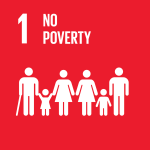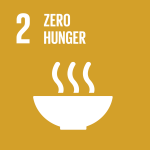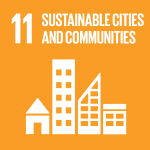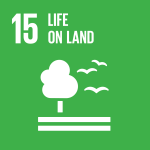
Photo:
Around 71 percent of Afghans live in rural areas, with nearly 90 percent of this population generating the majority of their household income from agriculture-related activities.
In addition to crop and livestock supported livelihoods, many rural households depend on other ecosystem goods and services for their daily needs, for example water, food, timber, firewood and medicinal plants.
The availability of these resources is challenged by unsustainable use and growing demand related to rapid population growth. Climate change is compounding the challenges: more frequent and prolonged droughts, erratic precipitation (including snowfall and rainfall), and inconsistent temperatures are directly affecting the lives and livelihoods of households, with poorer families particularly vulnerable.
Focused on Ghazni, Samangan, Kunar and Paktia provinces, the proposed project will take a multi-faceted approach addressing sustainable land management and restoration while strengthening the capacities of government and communities to respond to climate change.
- Community
- National
- Country Office
- Local Governments
- United Nations Development Programme (UNDP)
The project will target a total of 80,000 direct and indirect beneficiaries (20,000 per each province), of which 50% are women.
- Ministry of Agriculture, Irrigation and Livestock (MAIL)
- Global Environment Facility (GEF)
- United Nations Development Programme (UNDP)
Expected outcomes
Component 1: Capacities of national and sub-national governments and communities are strengthened to address climate change impacts.
Component 2: Restoration of degraded land and climate-resilient livelihood interventions
Component 3: Natural forests sustainably managed and new forest areas established by reforestation
Component 4: Knowledge management and M&E
- Image

- Image

- Image

- Image

- Image

Climate change scenarios for Afghanistan (Landell Mills, 2016) suggest temperature increases of 1.4-4.0°C by the 2060s (from 1970-1999 averages), and a corresponding decrease in rainfall and more irregular precipitation patterns.
According to Afghanistan’s National Adaptation Programme of Action (NAPA), the worsening climatic conditions in Afghanistan will continue to impact negatively upon socio-economic development, creating multiple impacts for given sectors. Sectors such as agriculture and water resources are likely to be severely impacted by changes in climate.
Increasing temperatures and warmer winters have begun to accelerate the natural melting cycle of snow and ice that accumulate on mountains – a major source of water in Afghanistan.
Elevated temperatures are causing earlier than normal seasonal melt, resulting in an increased flow of water to river basins before it is needed. The temperature change is also reducing the water holding capacity of frozen reservoirs. Furthermore, higher rates of evaporation and evapotranspiration are not allowing the already scant rainfall to fully compensate the water cycle. This has further exacerbated water scarcity.
Seasonal precipitation patterns are also changing, with drier conditions predicted for most of Afghanistan. Southern provinces will be especially affected (Savage et al. 2009).
Timing of the rainfall is also causing a problem. Rainfall events starting earlier than normal in the winter season are causing faster snowmelt and reduced snowfall.
Together, these factors reduce the amount of accumulated snow and ice lying on the mountains.
Furthermore, shorter bursts of intensified rainfall have increased incidence of flooding with overflowing riverbanks and sheet flow damaging crops and the overall resilience of agricultural sector. On the other end of the spectrum, Afghanistan is also likely to experience worsening droughts. These climate related challenges have and will continue to impact precipitation, water storage and flow.
Floods and other extreme weather events are causing damage to economic assets as well as homes and community buildings.
Droughts are resulting in losses suffered by farmers through reduced crop yields as well as to pastoralists through livestock deaths from insufficient supplies of water, forage on pastures and supplementary fodder.
In its design and implementation, the project addresses the following key barriers to climate change adaptation:
Barrier 1: Existing development plans and actions at community level do not sufficiently take into consideration and address impacts of climate change on current and future livelihood needs. This is caused by a lack of specific capacity at national and subnational level to support communities with specific advice on how to assess climate change risk and vulnerabilities and address these at local level planning. Communities and their representative bodies also lack awareness about ongoing and projected climate change and its impact on their particular livelihoods. Also risks and resource limitations, which are not related to climate change, are not always understood at all levels; and subsequently they cannot be addressed. This is connected with an insufficient understanding within the communities of the risks affecting their current and future livelihoods, including gender- and age-specific risks. As a result, climate change-related risks and issues are not sufficiently addressed by area-specific solutions for adaptation and risk mitigation in community as well as sub-national and national planning.
Barrier 2: Limited knowledge of climate-resilient water infrastructure design and climate-related livelihood support (technical capacity barrier): Entities at national and sub-national levels have insufficient institutional and human resource capacities related to water infrastructure design and climate-related livelihoods support. Given that the main adverse impact of climate change in Afghanistan is increased rainfall variability and overall aridity, the inability to master climate-resilient water harvest techniques and manage infrastructure contributes significantly to Afghanistan’s vulnerability.
Barrier 3: Limited availability and use of information on adaptation options (Information and coordination barrier): At the community level, there are a limited number of adaptation examples to provide demonstrable evidence of the benefits of improving climate resilience. At the same time, there is limited information about alternative livelihood options, rights and entitlements, new agricultural methods, and credit programs that have worked to reduce the vulnerability to climate change.
Barrier 4: Limited capacity in the forest department, lack of forest inventories, geo-spatial data and mapping are preventing adequate management of forest ecosystems. The predicted impact of projected climate change on forests and rangelands as well as the adaptation potential of these ecosystems are insufficiently assessed. This causes a lack of climate smart forest management, an unregulated and unsustainable exploitation of forests by local people and outsiders, leading to forest and rangeland degradation, which is accelerated by climate change and therefore limits their ecosystem services for vulnerable local communities.
Component 1: Capacities of national and sub-national governments and communities are strengthened to address climate change impacts.
Output 1.1 Gender-sensitive climate change risk and vulnerability assessments introduced to identify and integrate gender responsive risk reduction solutions into community and sub-national climate change adaptation planning and budgeting
Output 1.2 All targeted communities are trained to assess climate risks, plan for and implement adaptation measures
Component 2: Restoration of degraded land and climate-resilient livelihood interventions
Output 2.1 Scalable approaches for restoration of lands affected by climate change driven desertification and/ or erosion introduced in pilot areas.
Output 2.2 Small-scale rural water infrastructure and new water technologies introduced at community level.
Output 2.3 Climate resilient and diverse livelihoods established through introduction of technologies, training of local women and men and assistance in understanding of and access to markets and payment instruments.
Component 3: Natural forests sustainably managed and new forest areas established by reforestation
Output 3.1 Provincial forest maps and information management system established and maintained
Output 3.2 Provincial climate-smart forest management plans developed
Output 3.3 Community based forestry established and contributing to climate change resilient forest management
Component 4: Knowledge management and M&E
Output 4.1 A local level participatory M&E System for monitoring of community-based interventions on the ground designed.
Output 4.2. Improved adaptive management through enhanced information and knowledge sharing and effective M&E System
Under Component 4, the project will establish a local-level participatory M&E system for monitoring community-based interventions on the ground, while improving adaptive management through enhanced information and knowledge-sharing.
A national resource center for Sustainable Land Management and Sustainable Forest Management will be established.
A local-level, participatory M&E system for monitoring of Sustainable Land Management and Sustainable Forest Management will be designed.
Participatory M&E of rangeland and forest conditions – including biodiversity conservation and carbon sequestration – will be undertaken.
Best-practice guidelines on rangeland and forest restoration and management will be developed and disseminated.
Lessons learned on Sustainable Land Management and Sustainable Forest Management practices in Nuristan, Kunar, Badghis, Uruzgan, Ghazni and Bamyan provinces will be collated and disseminated nationwide.
Annual monitoring and reporting, as well as independent mid-term review of the project and terminal evaluation, will be conducted in line with UNDP and Global Environment Facility requirements.
- UNDPKarma Lodey RaptenRegional Technical Specialist, Climate Change Adaptation
